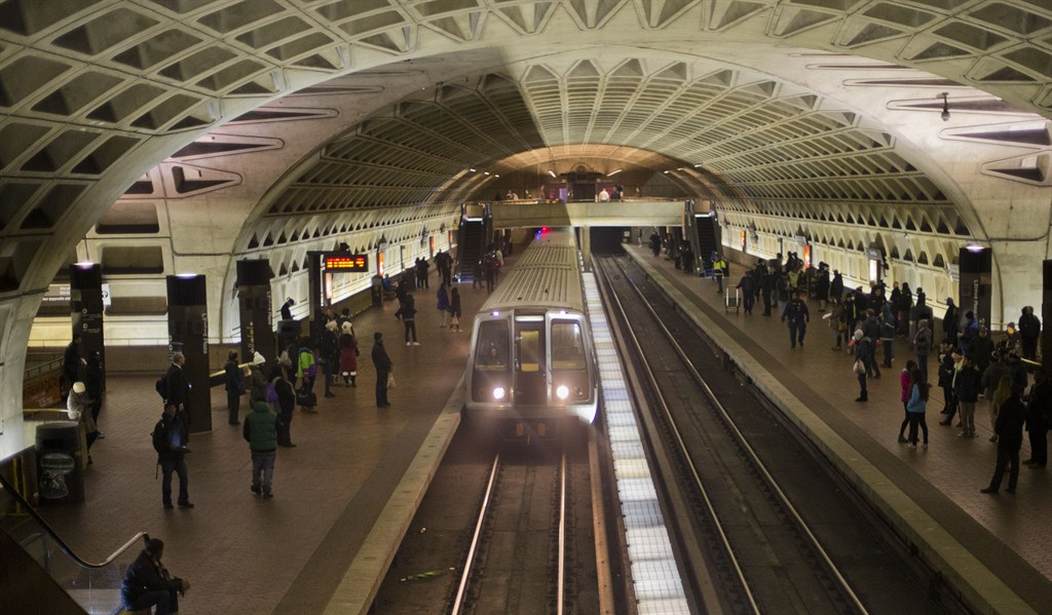Yesterday the Wall Street Journal had a story about a topic I’ve covered before, the hollowing out of American cities as a result of changes brought on by the pandemic. One symptom of those changes is the decline of mass transit in major cities on both coasts.
While offices have largely reopened and travel has resumed, many commuters are only coming in a few days a week. That shift has left subways, buses and commuter trains operating at well below capacity—particularly on Mondays and Fridays…
The ridership drop also has fueled an increase in transit crime, which in turn has pushed away more riders.
“The more you lose a ridership base, the more difficult it becomes to maintain a level of service that people are used to,” said P.S. Sriraj, director of the Urban Transportation Center at the University of Illinois, Chicago. “It’s becoming a vicious cycle.”…
New York’s subway system has regained about two-thirds of its pre-pandemic ridership with about 91 million trips in November, according to the MTA. But that is about 50 million fewer rides than in November 2019. Officials worry usage has stalled out at that level.
In San Francisco, the Bay Area Rapid Transit, or BART, recorded 3.7 million trips in November—a little more than one-third of the ridership before Covid.
For the moment, these subway systems are surviving on federal money (about $69 billion) which was doled out in 2020 and 2021 as part of various COVID response bills. But that money is running out now and will be cone in another couple years. Even before that happens some system like the MTA are running a deficit. Very soon these big cities will have to make some choices about how many trains and how large a system they can continue to operate given the current ridership.
For BART, federal funds are expected to run out in 2025, after which it projects a budget gap of more than $200 million. The authority plans to seek a new funding stream. Without it, the shortfall could trigger service reductions. One planning document shows BART would need to cut the number of train lines to three, from the current five, to break even.
Cutting lines and reducing the number of trains will help balance budgets temporarily but the reason administrators haven’t taken these steps yet is because they know it will also result in fewer riders. It’s the vicious cycle again which will only prompt the need for further cuts.
Some cities are considering alternative funding mechanisms. In New York there’s a new congestion tax being aimed at drivers in Manhattan who want to go south of Central Park. In Washington, DC the city will be offering free bus rides starting next summer in hopes of bringing ridership back up. It may work long term but in the short term DC is looking at spending $42 million to cover the costs.
The other problem driving the decline in ridership is crime and, in particular, homelessness. The MTA in New York surveyed riders and found that 60% said they were riding less because of fear of crime.
Lori Romeo, a lawyer who lives in Brooklyn and works in downtown Manhattan, said she rarely goes to her office anymore and takes an express bus instead of the subway when she does.
“The homeless are sad, but the floridly psychotic and dangerous make going into Manhattan a challenging experience,” she said.
One of the more depressing statistics in the recently released crime figures in New York City was that crime on the subways was up 30% this year despite an expensive effort ($20 million per month) to reduce it. It’s not all bad news though. In Chicago, mass transit crime has started to decline for the first time since the start of the pandemic.
On the trains, crime and arrest trends have troubled some riders, like Sam Bergman, 22. He now avoids taking the train after becoming entangled in what looked to him like a mugging that spilled over into the Red Line car he was riding in one evening at the end of October.
What seemed like a fight in the next train car burst through the emergency exit door into his car, Bergman said. One person looked clearly beaten up, and seemed to be trying to call 911. In the tumult, Bergman and his girlfriend got shoved into a corner of the car, but managed to avoid getting hit, he said.
None of these problems are going away anytime soon. Office workers will continue working from home and the homeless will continue using the trains as a moving bedroom and sometimes bathroom. It’s hard to see how the situation that existed pre-pandemic is ever going to return. Instead we’re headed for a new normal, one where mass transit and retail downtown are less important than they used to be.








Join the conversation as a VIP Member